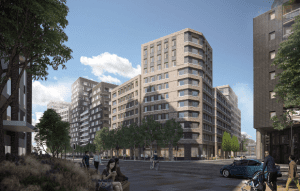
Financial Close for New Student Accommodation Development in Canning Town
Linkcity, the development arm of Bouygues UK, and Crosstree Real Estate Partners are delighted to announce the financial close and start on site of the fourth phase of the regeneration of Hallsville Quarter in Canning Town, London, forming part of the £3.7 billion Canning Town and Custom House Regeneration Programme. Phase 4 of the Hallsville Quarter proposes a new and exciting home for students in London developed by Linkcity, with design by PRP Architects and interiors by Holloway Li. The scheme comprises 375 purpose-built student accommodation rooms and a range of market-leading student amenity space with a roof terrace and landscaped public realm. As with the previous phases, Bouygues UK will be the main contractor and will take a low-carbon, sustainable approach targeting BREAAM Excellent. This project marks the penultimate phase of the £600 million Hallsville Quarter Masterplan and is expected to complete in the summer of 2026 ahead of the 2026 / 2027 academic year. In total, the Hallsville Quarter development will provide over 1,100 private and affordable homes, over 30,000 square metres of leisure and retail space and a new hotel all located directly opposite Canning Town underground station. The masterplan also provides new public spaces including play areas, pedestrian links, cyclist provisions and secure parking spaces. Oliver Campbell, Development Director of Linkcity said, “This is an exciting and pivotal moment as we reach financial close on the fourth stage of the Hallsville Quarter masterplan and commence work on site. The location of this development, in the thriving new town centre in Canning Town, will provide a vibrant area for students with excellent links into the centre of London. We are delighted to commence this joint venture with Crosstree and look forward to seeing the progress on site as we reach the final stages of this landmark, residential project.”Peter Robinson, Partner at Crosstree Real Estate Partners, added, “Crosstree continue to be active investors in the student accommodation sector benefiting from attractive cyclical and secular fundamentals. Given the market dislocation for forward funding transactions of this type, Crosstree is excited to partner with Bouygues UK, a best in class contractor/developer in taking forward a thoughtfully designed and highly specified PBSA scheme. Canning Town is a strong student location with excellent connectivity via the Jubilee Line to major university campuses in Stratford and London Bridge with 160k+ students within a 30-minute travel time. Together with our partners we look forward to the successful realisation of this project.” Building, Design & Construction Magazine | The Choice of Industry Professionals
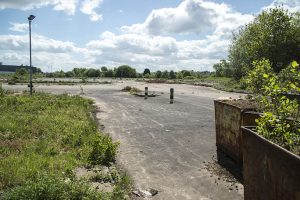
RTPI supports Government’s drive to deliver more homes on brownfield land
The Royal Town Planning Institute (RTPI) has expressed its support for the government to build more homes on brownfield land. However, the Institute warns that new urban brownfield schemes must be closely monitored to ensure residents are not landed with poor quality homes or poorly planned developments that people wouldn’t want to live in. In its consultation response, the RTPI has emphasised the importance of ensuring that new market housing does not displace commercial, industrial, and logistics uses for brownfield sites that are critical for local economic growth. The Institute further stresses that brownfield and previously developed land can be more difficult to develop, and the government should take more proactive steps to help councils encourage this development. To facilitate this process, the RTPI has suggested that scaled-up Homes England funding for brownfield development, and support for local authorities to review and update their brownfield land registers could be instrumental in strengthening development pipelines quickly. The Institute also recommends that stronger mechanisms for strategic planning and public service provision could help make previously developed land better serve their communities in the long term. Victoria Hills, Chief Executive of the RTPI, said: “We welcome the government’s drive to deliver more homes on brownfield land. However, it is crucial that new developments are well-planned and of high quality, and that they do not displace important commercial and industrial uses that play an important role in supporting sustainable mixed-use places including local economies. “With the right support and funding, we can ensure that brownfield sites are brought back into use in a way that benefits local communities and contributes to economic growth.” Building, Design & Construction Magazine | The Choice of Industry Professionals
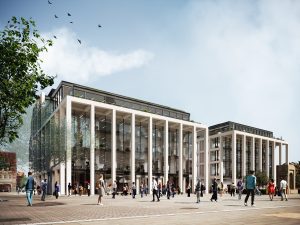
Bolton Council’s partnership with CBRE drives town centre transformation
Momentum is building behind the regeneration of Bolton town centre, as the council partners with leading real estate advisors CBRE to deliver two transformative development projects. Work on both the redevelopment of Crompton Place, and the regeneration of Church Wharf, could start as early as this year thanks to key council decisions taken this month. On Monday, the cabinet agreed to the provisional sale of land at Church Wharf to local developers Watson Homes to build 417 residential units and a 120-bed hotel. This came just two weeks after a lease surrender agreement on the former M&S building, paving the way for the flagship Crompton Place redevelopment scheme. Progress on both sites had been delayed by the COVID-19 pandemic, but strategic advice and support from CBRE has been pivotal in driving the projects forward. Previously an underused brownfield site, direct intervention from the council has turned Church Wharf into a site with real potential as a desirable riverside location at one of the centre’s main gateways. The provisional agreement reached this week will now see CBRE assess the viability and suitability of future plans before the final sale goes through. Nearby, the Crompton Place Shopping Centre is set to be demolished and replaced by what will be the central development project in Bolton’s wider regeneration masterplan. Promoting the opportunity at MIPIM 2024, Bolton set out its vision for a mixture of leisure, commercial and residential units on the site, with new public spaces and enhanced links between Victoria Square and the main thoroughfare of Bradshawgate. In addition to providing advice on demolition, placemaking and asset management at Crompton Place, CBRE is also taking the lead on identifying a developer to take on the site. Adam White, Senior Director, CBRE’s Development Advisory team said; “We are delighted to lead on identifying a development partner with the relevant experience, skills and resources to deliver Bolton Council’s vision for Crompton Place via a public-private partnership. “This is a significant mixed-use, multi-phase regeneration scheme on an important gateway site for the town to transform the area into a distinctive, vibrant place for people to work, visit and live. “We have been instructed to provide multi-discipline advice to the Council to consider the scheme’s optimal route to market, review and manage the demolition scope of works, as well as develop a placemaking strategy for the development. “The Council will undertake a pre-marketing engagement process to elicit initial feedback from potential developers, investors and funders on the appeal of the opportunity, initial thoughts on use mix, massing and programme and views on the delivery structure.” Both Church Wharf and Crompton Place are part of a wider regeneration masterplan developed by Bolton Council which is already delivering a number of schemes in the town centre and beyond. The renovation of Bolton Central Library, the upcoming Bolton Market Food Hall, Elizabeth Park, and the Wellsprings Innovation Centre have been backed by the government’s Towns Fund. Residential developments at Moor Lane and Deansgate Gardens will contribute to a growing town centre population which Deloitte projects will reach 5,000 over the next 15 years. Success stories elsewhere in the borough include the Bolton Institute of Medical Sciences and CAPITAL&CENTRIC’s Farnworth Green urban neighbourhood development. Bolton Council Leader, Cllr Nick Peel, said: “As consumer habits change, we have developed a masterplan which consolidates Bolton’s retail offer and creates space for residential, leisure, hospitality, and commercial space. “Several projects are already underway, and the next phase will see the delivery of two major developments that will act as a catalyst for even more private sector investment. “These are large and highly complex projects and the support of CBRE has been invaluable to our work to make Bolton an even better place to live, work and visit.” Building, Design & Construction Magazine | The Choice of Industry Professionals
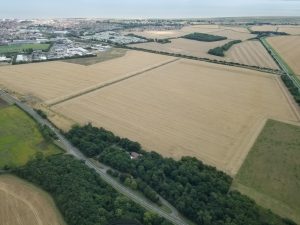
Gateway approved: New 336-Acre development set to transform East Lincolnshire
MOMENTOUS plans to transform part of the East Lincolnshire coast have taken an important step forward, following unilateral approval of the 336-acre sustainable urban extension scheme in Skegness. The news, delivered Wednesday 20 March at an executive meeting of East Lindsey District Council in Horncastle, means the town is on the cusp of receiving more than £300 million in economic benefits, delivering hundreds of local jobs. Projections undertaken by the Gateway team showcase the scheme will deliver employment benefits of £289.7 million, £20.5 million and £16 million in Gross Value Added (GVA) measurability for commercial, industrial and retail sector jobs. The proposed Local Development Order is seeking to expedite the delivery of up to 1000 new homes and more than 49 acres of combined business, industrial and community space. Situated to the west of the town, on land principally owned by Croftmarsh, with additional areas owned by the Scarbrough family, the Skegness Gateway scheme is set to breathe new life into an area of the Lincolnshire coast that drastically needs change in order to secure its future, boosting the local economy and providing the education and jobs for local people that will encourage them to stay in the area. Sue Bowser of Croftmarsh, said: “This is a milestone moment for the people of Skegness and an important step in revitalising our town and community. It is a pathway for people to carve a real future in the town, with employment, skills and learning opportunities all situated within one site, connected by an ambition to restore Skegness at the heart of East Midlands economic investment. “Having farmed the land at Croftmarsh for 30 years, it was always hoped that it could eventually be used for development. Now, it’s a chance for prospective consultants, developers and investors to look more closely at our plans and be a part of transforming Skegness’ future. It will become a new home for thousands of families, a place of ambition and prosperity, with a lasting legacy for generations to come.” As part of the proposals, the Skegness Gateway site also includes provision for a new crematorium, 78 acres of green open space, supported living options and a new local centre. The scheme has garnered wide stakeholder and public support since its launch three years ago, following a series of engagement sessions and appearances at local community events. Last November, it was described by Matt Warman, MP for Boston and Skegness as a catalyst to ‘allow people to gain the skills and knowledge they need to get the jobs they want.’ The scheme was also mentioned in the House of Commons as offering a ‘significant boon to local NHS services.’ Enabling works on the new Skegness TEC college, which is situated on the Skegness Gateway site, is already underway, following planning permission being granted in February last year. Adrian Clarke, group vice principal for corporate services at TEC Partnership, said: “The new campus will provide fantastic opportunities for the local community to undertake courses in further and higher education and develop the skills the area needs for its future.” Chris Baron, chair at Connected Coast, said: “We are seeing unprecedented investment in Skegness which is supporting the delivery of aspirational and transformational projects. “The Skegness Gateway represents a further and significant opportunity to create much-needed facilities for the area and enhance Skegness for people who live and visit here. “Together the opportunities, interventions, and investment – which includes the Towns Fund and the recently announced Long Term Plan for Towns – will bring long-term, sustainable benefits for Skegness which will be felt for generations to come.” Councillor Steve Kirk, East Lindsey District Council portfolio holder for coastal economy, said: “I am delighted to see another positive step taken towards delivering this transformational piece of investment to Skegness and East Lindsey as a whole. “By supporting these plans, we are helping to create new jobs, new education and skills development options, new homes and new opportunities for businesses and the local economy. This is yet another example that shows Skegness is a great place to live, work, play and invest. “Alongside our ongoing Towns Fund and Levelling Up projects, the positive impact of these developments will be felt for generations to come, and I look forward to continuing to see them become a reality in the months and years ahead.” For more information on the Skegness Gateway, visit https://skegnessgateway.co.uk/. Building, Design & Construction Magazine | The Choice of Industry Professionals
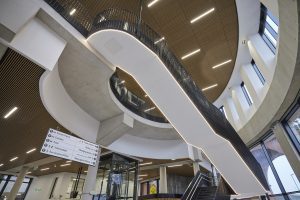
Transforming Stockport: Interchange Opening Marks Milestone in £1 Billion Town Centre Regeneration
Yesterday, the Mayor of Greater Manchester Andy Burnham and the Leader of Stockport Council, Mark Hunter, launched the £140 million state-of-the-art transport interchange in Stockport, the latest milestone in Stockport’s £1billion regeneration programme. The state-of-the-art transport hub is a major moment in transforming Stockport. A key pillar within the Stockport Mayoral Development Corporation’s (MDC) redevelopment of a 130-acre brownfield site, the completion of the Interchange shows plans to transform the fate of Stockport, once voted one of the worst places to live in the UK, continues at pace. Featuring 18 bus stands, with the capacity for 164 departures an hour and new cycling and walking routes to the train station and Stockport town centre, the Interchange sees Stockport becoming more accessible and sustainable than ever before. Designed with future Metrolink integration in mind, Stockport Interchange plays a crucial role in cementing the town as one of the best-connected towns in the North West. The Interchange also delivers a new two-acre park, the first park to have been built on top of a transport hub, as well as 196 new high-quality apartments, developed by CityRise which are due to complete in the summer 2024. The Interchange will play a key role in the Bee Network – Greater Manchester’s vision for an integrated, London-style transport system – when Stockport joins in early January 2025. Speaking on the Interchange opening, Greater Manchester Mayor Andy Burnham, said: “Stockport now has an absolutely world-class transport interchange that will play a key role in bringing prosperity to the town and its people in the future. “Safe, reliable and affordable public transport and active travel facilities are central to improving life for people and businesses in Greater Manchester and I have no doubt this impressive new interchange will do just that. “These new connections will open up more opportunities for people to access jobs, skills and education, while supporting the regeneration of the area by attracting increased footfall and investment. “When we set up the Mayoral Development Corporation it was about delivering an ambitious vision for the town and the interchange is showing this mission in action. “In January 2025, the Bee Network is coming to Stockport and eventually it will be the first area in Greater Manchester serviced by a fully electric bus fleet. By providing people with a modern, attractive and accessible interchange we will get more people on these buses – allowing us to keep prices down and continue to improve the network.” Cllr Mark Hunter, Leader of Stockport Council, added: “Today is a landmark day in the history of our town. “Stockport has always been pioneering and ambitious, establishing itself as a leading centre for textiles during the Industrial Revolution and setting the standard for urban renewal with the ‘space age’ Merseyway shopping centre – a 1960s feat of engineering across the River Mersey. “And our £1bn town centre regeneration programme – one of the largest nationally – is reinventing and spectacularly transforming the heart of our borough now and for the future. “We are already among the 12 best places to retire in the UK (Which?) and one of the 12 best places to buy your first home (The Times). However, we are committed to making Stockport a place of opportunity for all. A place everyone is proud to call home. “The Interchange and Viaduct Park are the real heartbeat of Stockport’s £1billion transformation and this is only the start for our borough.” Stockport Interchange is a major milestone within the first phase of Stockport Mayoral Development Corporation’s (MDC) 130-acre £500m regeneration masterplan, one of the largest town centre regenerations being delivered in the UK. Following the completion of the Interchange, this year Stockport MDC will continue to work with leading developer Capital&Centric to bring forward the restoration of Weir Mill, a Grade II listed mill building being transformed into 253 new apartments and a new cultural and leisure district due to complete in winter 2024. Consultation on the next phase of Stockport Exchange, the new business district for the town and Stockport8 are also currently underway. Eamon Boylan, Interim Chair of Stockport MDC, added: “This year marks five years since Stockport MDC was established as key delivery vehicle for Stockport’s trailblazing regeneration. It is testament to the expertise and collaboration of our board and partners that we have been able to open a landmark scheme for the region in that time frame, despite the substantial socio-economic challenges. “Delivering improved connectivity to employment and leisure experiences in the town and wider region, the Interchange is a key milestone in our mission to transform Stockport into the most liveable town in the UK. “Over the course of 2024 we will see even more major milestones brought forward within the Town Centre West masterplan, which will cement Stockport’s position as one of the most exciting, and, arguably more importantly, the most convenient, towns to live. “ Building, Design & Construction Magazine | The Choice of Industry Professionals
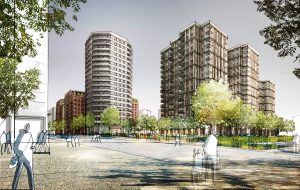
Remade in Dagenham: new homes and green spaces on the way for historic factory site
Ford’s iconic stamping plant factory in Dagenham, East London, which gained fame through the historic equal pay strikes depicted in the film “Made in Dagenham,” is undergoing a remarkable transformation. The 45-acre site, once a key part of the powerhouse of East End industry where nearly 11 million Ford cars were manufactured, will soon be home to a dynamic new neighbourhood with thousands of much-needed homes and amenities, including a new urban park. Ford’s stamping plant, which closed in 2013, was the site of the pivotal 1968 strike led by female sewing machinists, who were advocating for equal pay for comparable work. Their courageous stand ultimately paved the way for the Equal Pay Act in 1970. Dagenham, with a heritage dating back 4,000 years, has witnessed a remarkable transformation from a historic barrier along the Thames to the site of Europe’s largest car plant. Notable for its history as a hub of industry and commerce, it once hosted a timber dock and shipping company. In 2021, the Mayor of London provided a £80m grant from the Mayor’s Affordable Housing Programme to enable Peabody to acquire the site. The Hill Group then entered a joint venture with Peabody to deliver the development of the first phase, with construction getting underway in March 2023. The shared vision is to redefine the landscape of East London once again and bring new life to the area over the next decade. Spanning multiple phases, the ambitious project aims to deliver more than 3,500 homes, with 1,640 set to be affordable for local residents. Once complete, Dagenham Green will also boast 10 acres of expansive parks and play spaces. Phase one, which constitutes just over a quarter of the total homes, will see the construction of 935 homes, 35 percent of which will be affordable. Situated in the south-west corner of the site, adjacent to Dagenham Dock railway station, it will serve as the gateway to the broader masterplan area, which received outline planning approval in March 2022 following extensive consultation with the community. Drawing inspiration from the marshland, a key feature of phase one will be the first section of a new five-acre urban park complete with a large pond, children’s play areas, and a heritage trail commemorating the legacy of the Dagenham women who championed equal pay rights in the 1960s. There will also be a market square linking Dagenham Green to the nearby railway station, fostering connectivity and a strong sense of community. Phase one will also incorporate more than 1,600 square metres of non-residential space, for commercial, social, and leisure activities. The first residents are expected to move in from the summer of 2025. The project also prioritises sustainability, with plans for biodiverse green spaces and an air-source heat pump energy centre for the production of low-carbon energy. During construction, the partners are committed to providing 48 apprenticeship opportunities and employing 25 percent of the workforce from the local area, with extensive training programmes offered to participants. Peabody and its partners, including Hill, the Greater London Authority (GLA), Barking and Dagenham Council, and Be First Regeneration Ltd came together on Thursday 22 February to see how the redevelopment is progressing. Philip Jenkins, Executive Director of Development at Peabody, said: “At a time when all development is challenging, it’s always exciting to see tower cranes at work and construction progressing so rapidly. With thousands of much-needed new homes and facilities on their way for Dagenham, the development promises to be a landmark project, blending modern amenities with features that celebrate the area’s rich heritage. From its industrial heyday to becoming a symbol of progress in the fight for equal pay, Dagenham Green will create a vibrant new neighbourhood, and we look forward to welcoming new residents from 2025.” Andy Fancy, Managing Director at The Hill Group, said: “It is truly inspiring to gather here alongside Peabody, esteemed council members, and representatives from the GLA, to celebrate the remarkable strides achieved here in Dagenham. The realisation of a project of this magnitude takes years of meticulous planning and collaboration with partners and stakeholders. This collective effort is instrumental in the continual growth and success of this exciting new community.” Cllr Darren Rodwell, Leader of the Council, said: “We’re proud of our history in Barking and Dagenham and I’m pleased that this nationally important site, where women fought for equal rights in 1968 and 1984, will once again play a key part in our community – providing new, safe homes for residents. “I’m glad to be working with Peabody on this project and I think it’s fantastic that they’re not just focusing on homes but also on creating green spaces and a market for the community to come together and enjoy. “And not only that, with a large proportion of the workforce coming from B&D and dozens of apprenticeships being created for local people this project will be a huge boost to the borough as a whole.” The Deputy Mayor of London for Housing and Residential Development, Tom Copley, said: “I’m delighted that Dagenham’s famous Ford factory is being revamped to deliver over 3,500 high-quality new homes, with nearly half of these set to be genuinely affordable for local residents. “This promises to be a truly impressive development utilising the very best in modern architecture and design, whilst maintaining the unique heritage and character of the local area. The green spaces and parks, fantastic new amenities and community spaces, job and apprenticeship opportunities, and excellent transport links on offer will have huge benefits for the local community – helping to build a fairer, greener, more prosperous London for all.” Building, Design & Construction Magazine | The Choice of Industry Professionals

